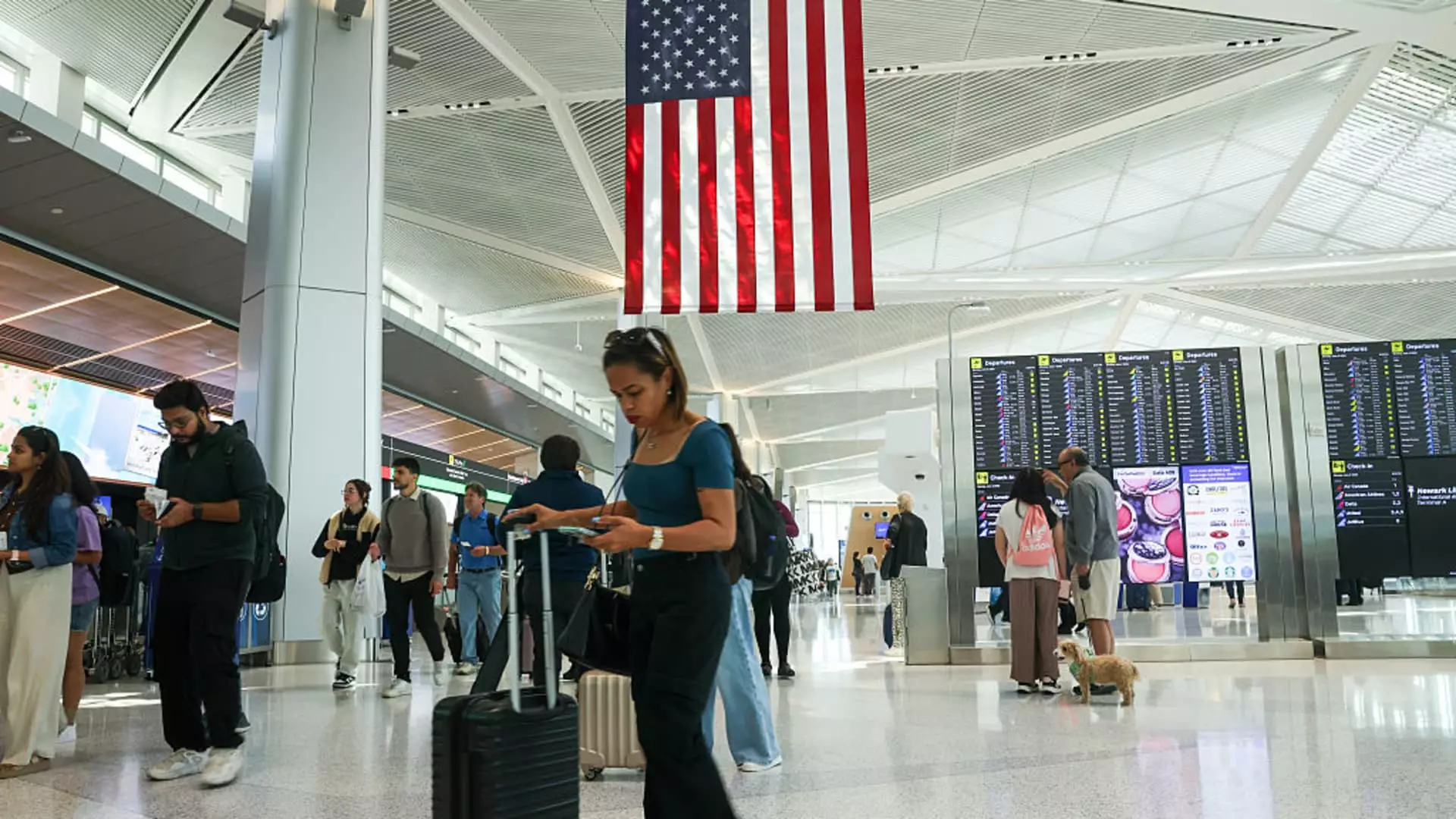Despite the optimistic headlines predicting a bustling July 4 holiday period, the reality beneath the turbulence is far murkier. Airlines are amidst an industry-wide scramble, not to capitalize on surging demand, but to survive the ongoing economic strains that have cast a shadow over the entire travel sector. While millions of Americans may take to the skies for holiday festivities, this apparent spike in activity does little to mask a deeper malaise that threatens the industry’s stability well beyond the summer months.
The summer thus far presents a curious paradox: fares are lower, travel numbers are stable but not spectacular, and industry giants are sounding subdued. Domestic fares averaging $265 per round-trip are the lowest since 2021, signaling not strength but an awakening to reality. Airlines previously buoyed by high occupancy and inflation-driven price hikes find themselves retreating into a defensive posture, eager to lure avoidant consumers into bookings through discounts. This temporary reprieve for travelers is, at best, a Band-Aid over an industry grappling with systemic issues that won’t resolve themselves, regardless of summer cheer.
Uncertainty Looms Over the Future of Air Travel Demand
What complicates matters further is the unpredictable macroeconomic terrain. Airlines like Delta, American, and Alaska have already pulled back their optimistic forecasts for 2025, citing an uncertain environment driven by fluctuating tariffs, geopolitical tensions, and a decline in foreign visitors—a crucial market increasingly absent from the usual air traffic flow. This hesitancy underscores a sobering truth: no one truly knows what the economic landscape will look like even six months from now, much less a year.
Despite a resilient labor market, demand for air travel remains tepid at best, with no clear signs of a major uptick. The June employment data defied expectations, but it did little to bolster confidence in a recovery that has so far struggled to gain true momentum. High-profile economic indicators reveal a picture of uneven growth—an economy technically resilient, but one that isn’t translating into robust air travel numbers. The industry’s fragile footing is evident in the cautious forecasts, capacity cuts, and strategic flight reductions announced by carriers aiming to weather the unpredictability.
Fares Are Falling, But Is It Enough?
Lower fares might seem like good news for consumers, but in the context of an industry suffering from overcapacity and subdued demand, they are a symptom of deeper issues. International travel, historically a bright spot, is also cooling. Although international trips are up modestly compared to last summer, fares for flights to Europe and Asia are down significantly—almost matching pre-pandemic levels—indicating a saturation point and possibly a capitulation by travelers wary of economic instability.
Online data analytics corroborate a distressing trend: air travel spending has declined sharply, with Bank of America noting an 11.8% drop last month. This isn’t just a blip; it signals waning consumer confidence and an unwillingness to commit financially amid economic uncertainties. Airlines, recognizing this, are expected to further cut capacity, especially on less profitable routes or during off-peak periods, to avoid hemorrhaging cash during what should be their second and third highest earning quarters.
The Industry’s Dangerous Tightrope Walk
The strategic response by airlines is not to push aggressively for demand, but to try and sustain what little profitability they can salvage. This is a dangerous game. Overcapacity, even with lower fares, risks driving prices down into a race to the bottom, eroding profit margins. The summer, which was supposed to be a cash cow, is now being viewed as a temporary fix rather than a sign of robust recovery.
The underlying problem is that the entire industry is caught in a state of limbo—hoping for a rebound that might not come, while executing defensive maneuvers that could stifle future growth. The risk is that persistent demand stagnation, coupled with rising fuel and labor costs, will push airlines into a vicious cycle: cutting flights, losing market share, and ultimately, weakening their competitive position.
The optimism surrounding the summer travel surge masks a brutal truth: the airline industry’s future remains uncertain, fragile, and precariously balanced. Airlines are not just fighting for revenue—they are battling a systemic malaise that threatens their very survival in a period of unprecedented economic upheaval. The skies might look busy, but beneath the surface, the industry is quietly embroiling itself in a fight for relevance and sustainability.

